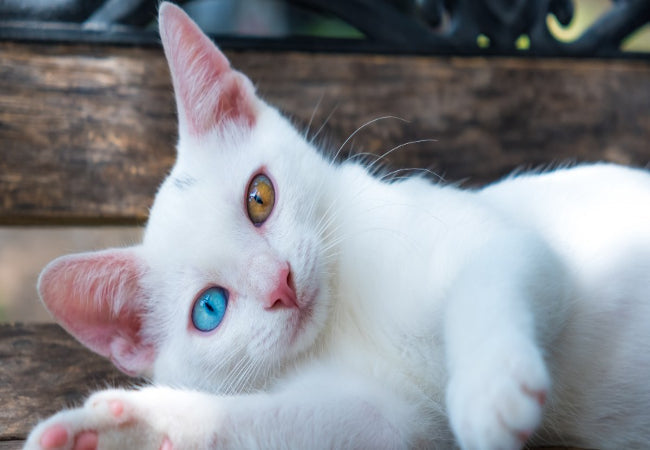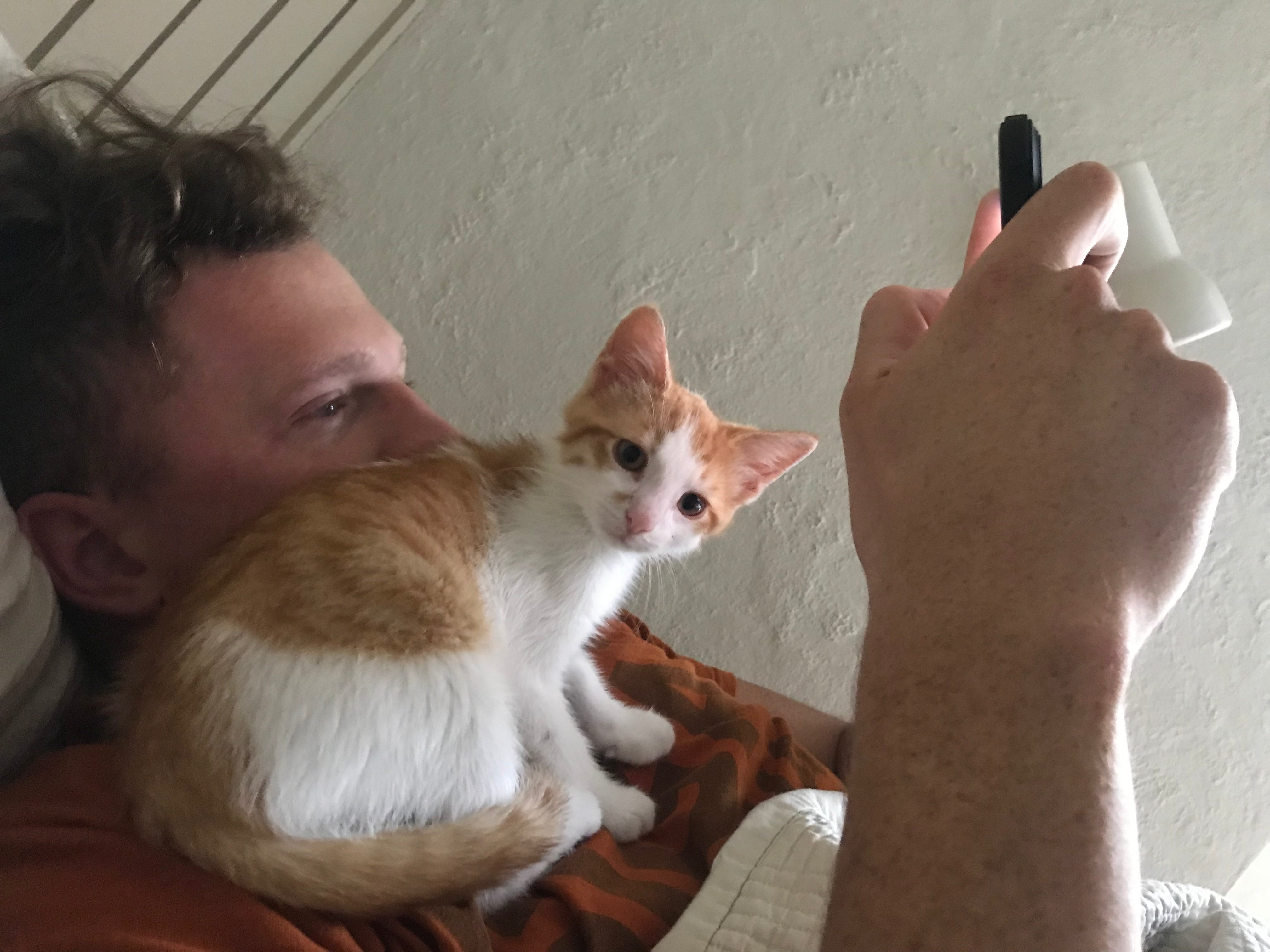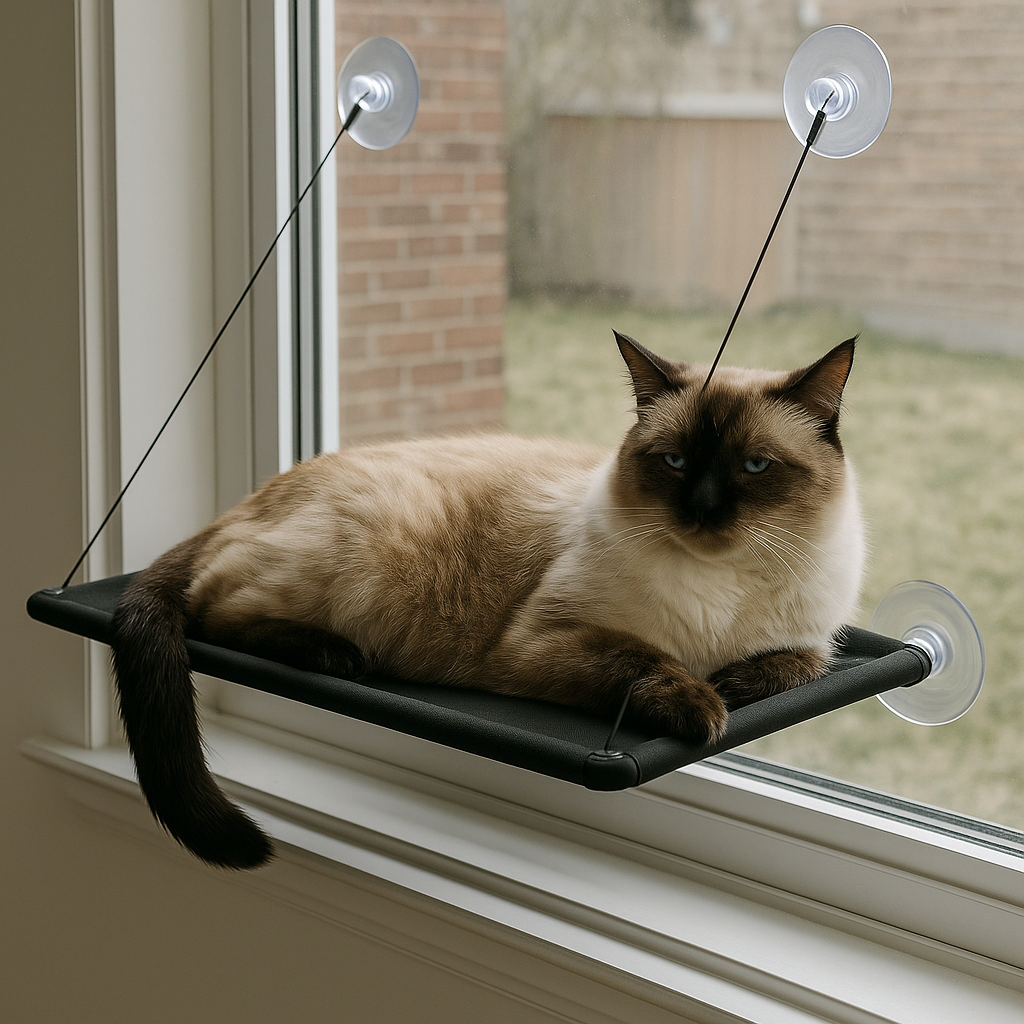Why Cats Have Different Eye Colors 2025: Heterochromia & Genetics 👀

In this article
Why Cats Have Different Eye Colors 2025: Heterochromia & Genetics 👀
By Dr. Duncan Houston BVSc
Cats are fascinating creatures, not just because of their personalities but also because of their unique physical traits, such as their eye colors. Some cats have striking blue eyes, others green, yellow, or gold, and some even have two different-colored eyes — a condition known as heterochromia. But why do these differences occur? Let’s dive into the science behind feline eye colors.
🧬 The Genetics of Cat Eye Color
A cat's eye color is largely determined by genetics, particularly the OCA2 gene. This gene is responsible for producing a protein that regulates melanin production, which is the pigment that gives color to the iris.
-
Blue eyes: Low melanin in the iris. Common in kittens and certain breeds, such as Siamese or white cats.
-
Green, yellow, or gold eyes: Moderate melanin levels.
-
Brown eyes: High melanin levels, giving a rich, deep hue.
Interestingly, the eye color is not just the pigment itself but also how light reflects off the tapetum lucidum, a layer behind the retina that enhances night vision. This reflection passes through the iris, creating the visible color.
🌈 Heterochromia: When a Cat Has Two Different-Colored Eyes
Heterochromia occurs when a cat has two differently colored eyes, often due to variations in melanin levels between the eyes. There are three main types:
-
Complete heterochromia:
-
Each iris is completely different in color.
-
Example: One blue eye and one green or gold eye.
-
-
Sectoral heterochromia:
-
A segment of the iris is a different color than the rest of the same eye.
-
Example: Mostly green eye with a gold wedge.
-
-
Central heterochromia:
-
The zone around the pupil (central iris) is a different color than the outer part of the iris.
-
Example: Golden ring around the pupil with green on the outer iris.
-
Complete heterochromia is the most common in cats and is often seen in:
-
White cats
-
Cats with point markings, like Siamese or Himalayan breeds
This happens because melanin fails to develop in one eye while the other develops normally. It can also be influenced by genetic mosaicism, where different parts of the cat's body have different genetic patterns.
⚠️ When to Be Concerned About Eye Color Changes
While many eye color variations are normal and genetic, sudden changes in eye color can indicate health problems:
-
Uveitis (inflammation inside the eye)
-
Glaucoma (increased eye pressure)
-
Cataracts or other eye diseases
If you notice a sudden change, consult a veterinarian immediately. Early detection can prevent further complications and preserve your cat's vision.
🐾 Fun Facts About Cat Eyes
-
Many kittens are born with blue eyes, which gradually change color as melanin develops.
-
Heterochromia is more common in purebred cats but can appear in mixed breeds too.
-
Eye colors in cats are not just cosmetic — they can provide insights into genetics and sometimes even health.
📝 Bottom Line
Cats’ eye colors are a fascinating mix of genetics, melanin levels, and light reflection. Complete heterochromia, sectoral heterochromia, and central heterochromia all result from differences in melanin, most often harmless and genetic. However, sudden changes in eye color should always be checked by a vet.








